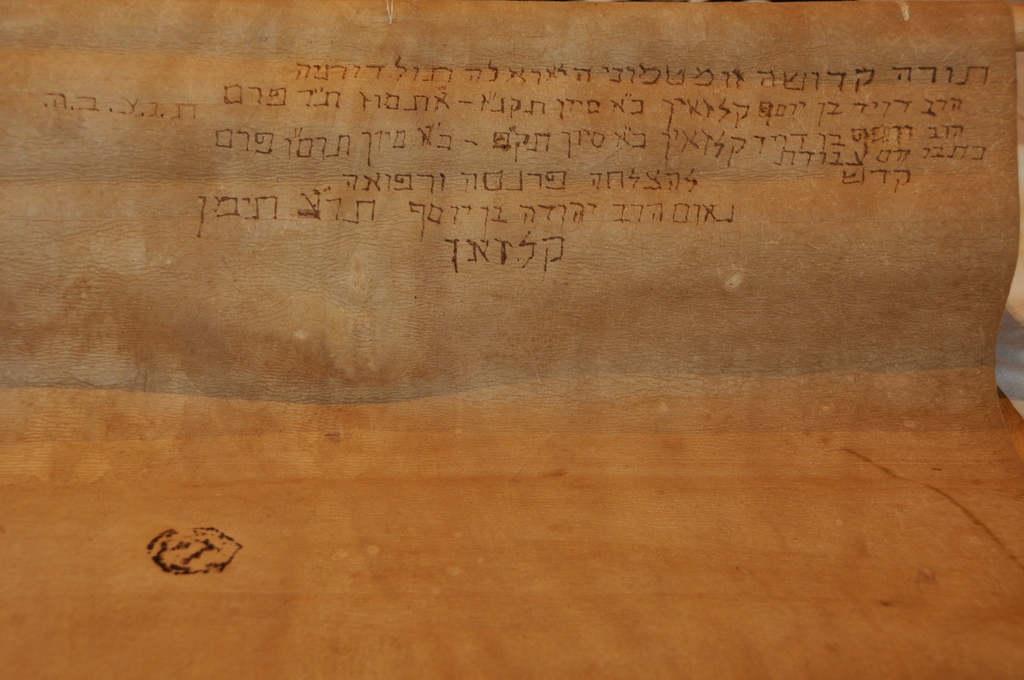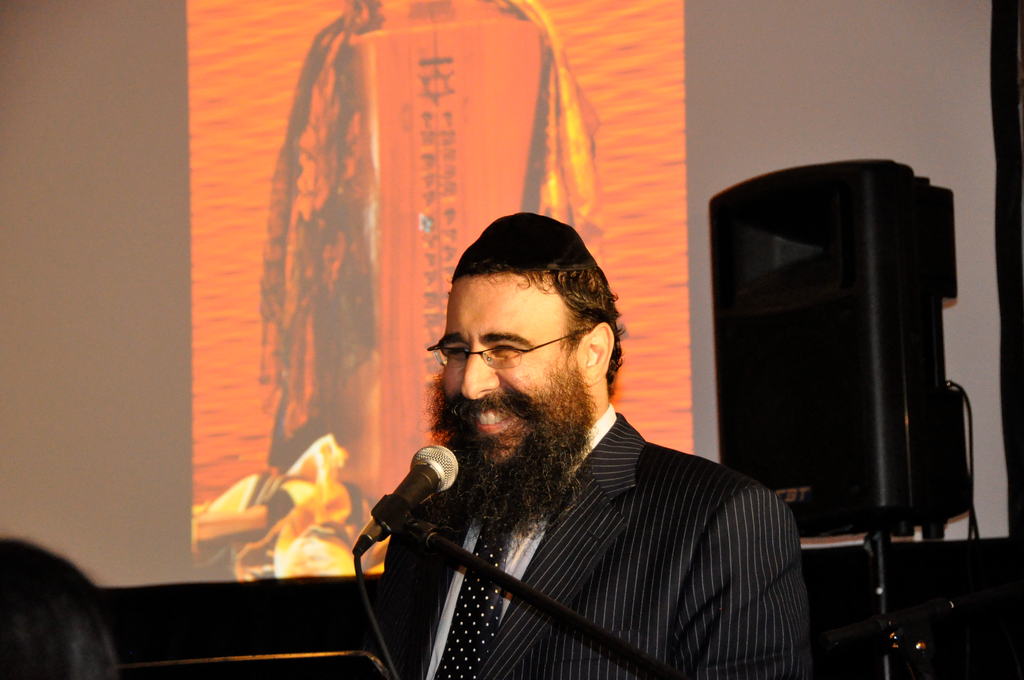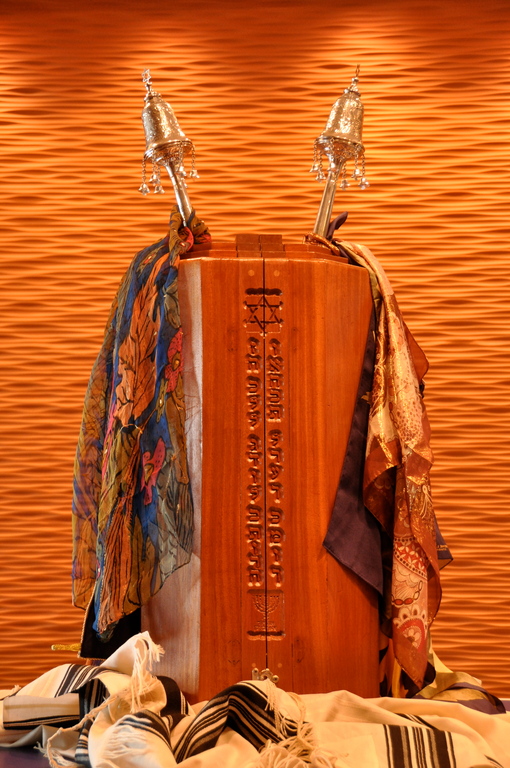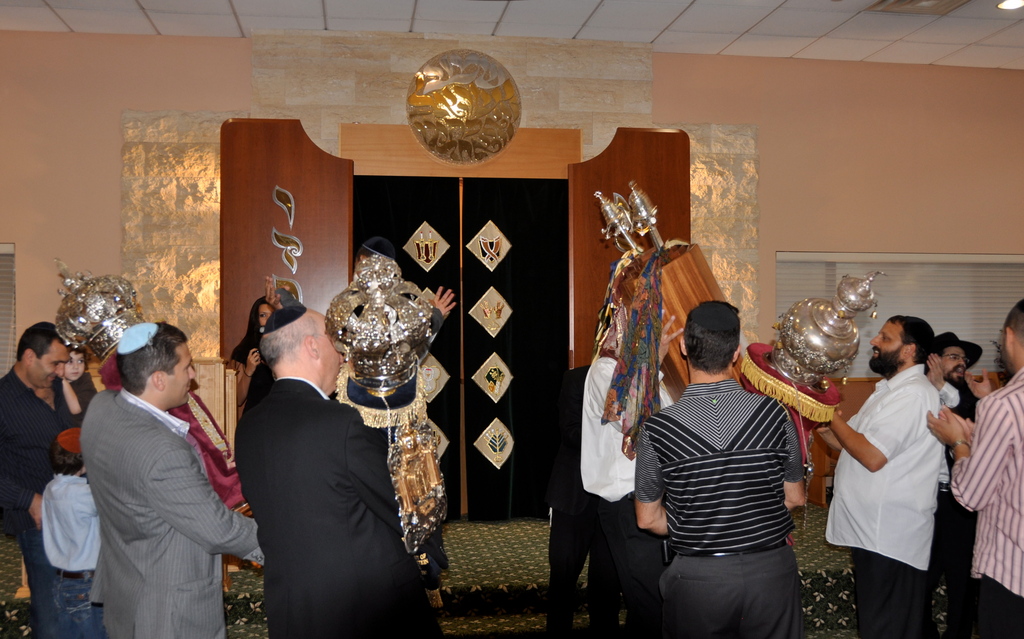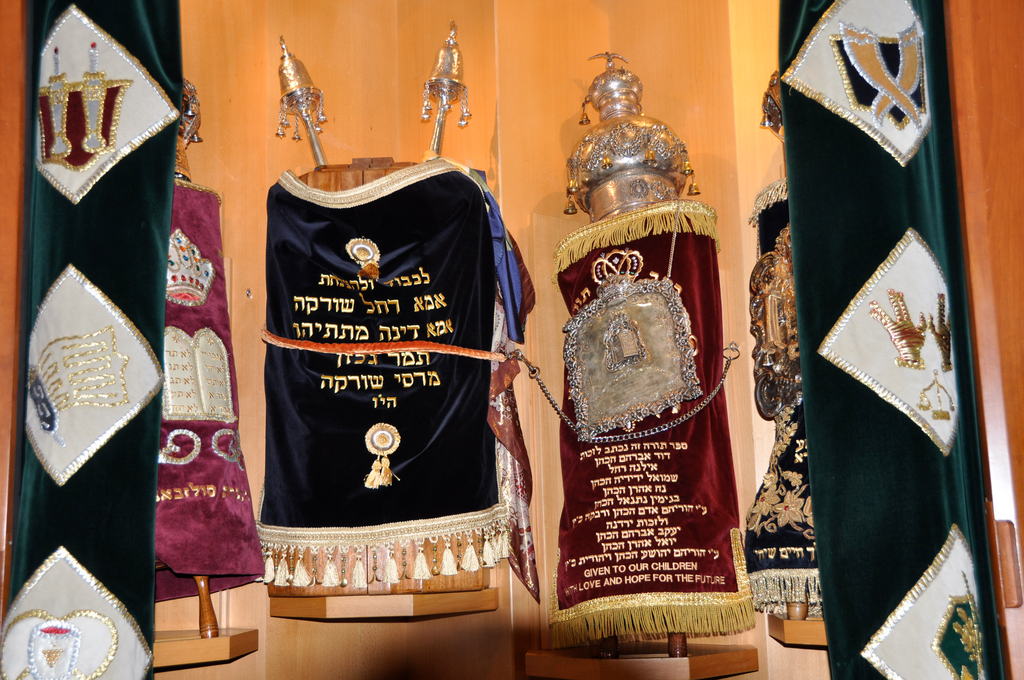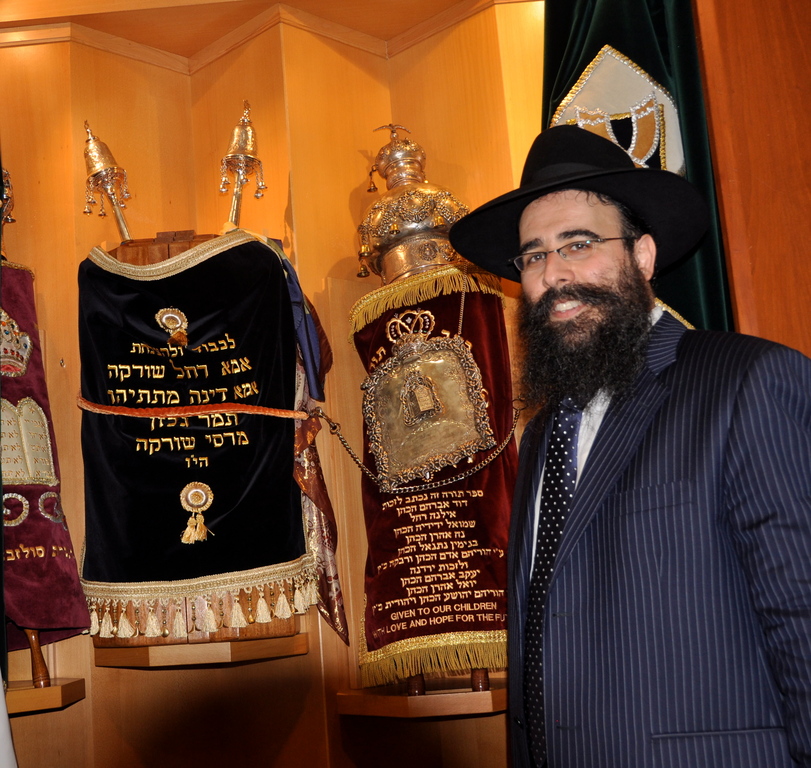‘Miracle’ Torah comes home to Port Washington
If the newest Torah scroll in the ark at Chabad of Port Washington isn’t a legend yet, just wait: it will be.
The 175-year-old Torah unexpectedly found its way into the hands of a descendant of its scribe, born 200 years later to the day. Sands Point resident Yosef (Jason) Shurka read from the scroll at his bar mitzvah celebration on Rosh Chodesh Tammuz, Sunday, June 13.
“This was a father’s bar mitzvah gift to his son,” said Rabbi Shalom Paltiel, director of Chabad of Port Washington. “Only after it arrived did they realize that it was written by the boy’s great-great-great-grandfather.”
Befitting a Gold Coast homecoming, the Torah was brought to its new home in a 1976 Cadillac convertible, followed by a caravan of Lexuses with horns blaring down Shore Road.
The welcome continued inside, with hakafot worthy of Simchat Torah, and a lavish dinner, as Menashe (Manny) Shurka, an imposing figure in a white suit, gathered his thoughts before telling the Torah scroll’s unique story. Shurka is president of the New York division of Signature Investment Group, an firm specializing in real estate development.
Rabbi Paltiel recalled Jason’s bar mitzvah in June, an outdoor affair on a sprawling lawn overlooking Long Island Sound.
“Tefillin, candles and Shabbat,” he said, and then quoted Shurka: “I want my children to have a good American life, but to also remember something special. It was a bar mitzvah with camels, but the centerpiece was the Torah. My wife said that anyone who buys his son a Torah is worthy of a miracle.”
Picking up the story, Shurka said that out of respect for his wife Marcy, he sought to purchase an antique Yemenite scroll. A Torah was located and found to be kosher, but then an expert determined that it was actually written in Persia. and by two different people. In the midst of Sefer Bamidbar, the handwriting changed.
Shurka solved that mystery when he sought to wind the Torah tightly to fit into the case he acquired. On the back of the Torah he found a scrawled inscription: “Rabbi David Kalazan, son of Yosef, born on the 21st day of Sivan in the year 5557 and Rabbi Yosef Kalazan, son of David, born on the 21st day of Sivan in the year 5580, wrote this.”
The original scribe had died, leaving his son to pick up the task. And the scribe seemed to be family: the name Kalazan sounded much like Marcy’s maiden name, Galazan.
Taking an interest worthy of a genealogist and historian rolled in one, Shurka tracked down distant relatives to ultimately plot a direct connection between the scribe and his son. “The first rabbi [scribe] died on Parshat Pinchas, and my son’s bar mitzvah is on Parshat Pinchas,” Shurka said.
In Jerusalem, he found the former home of his wife’s grandfather Itzhak Kalazan, and his grave on Har Hamenuchot. Kalazan had passed the Torah to ritual slaughterer Zechariah Cohen, who made aliyah with the scroll in 1950. It passed through two more owners before its purchase by Shurka brought it back into the family.
The scroll needed a case, and Torah merchant Nir Garmi provided him with a 400-year-old wooden case. “We discovered a whole new family,” said Shurka. “Most of them were our friends, but now we know them as our new cousins.”
Garmi turned out to be a distant cousin of his wife, and her Yemenite family turned out to have had Persian roots under the name Kalazian, which gradually morphed into the Yemenite Kalazan, and the Israeli Galazan.
“My wife is of Persian descent, just like me,” said Shurka. “That is the best of all.”
Similar to a play, all the actors gathered at the end, including the Torah vendor, newly discovered cousins, and the bar mitzvah boy, all dancing around the Torah, as cameras recording the dancing.
Rabbi Paltiel called the celebration worthy, because the miracle behind the scroll’s story is clear.
“It was hailed as the miracle of Port Washington,” said Rabbi Paltiel. “The hand of G-d is so hidden, and this is a breath of fresh air.”

 46.0°,
Light Drizzle
46.0°,
Light Drizzle 
